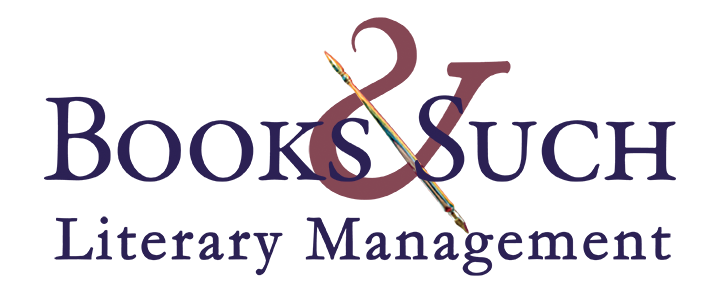Your first question may be: What is SIP? It stands for Shelter in Place, a term we didn’t even think about three months ago. These SIP activities are suggestions which may strengthen our writing but are also distracting and perhaps something new and different to do during Covid shutdown.
SIP Activity #1— Try Whispersync– the Amazon app for reading and listening simultaneously. I am a huge fan of this innovation. Nearly all the novels I read are now paired with the Audible book. I just looked at my library and I have 120 books paired with audio. With reading/listening I’ve become so much more sensitive to dialogue and to the movement of the plot. Many users love Whispersync because they can read the ebook and when it is time to cook dinner they just pop in their headphones and continue listening to the story. Whispersync keeps track of where you are and when you go back to your ebook, it is on the page at which you stopped listening. Magic! 
I use it differently, almost like a child who is learning to read. I follow the ebook while listening to the narration on the Kindle app on my iPad. Each word is highlighted as I read. Because I read for pleasure very late at night, I used to tune in to an audio book and promptly fall asleep. Now, because I’m digesting the story in two modalities– listening and seeing– I’m totally engaged. And the narrators of good fiction are gifted vocal talents who skillfully change the accents and pacing for characters. I read mostly English historical fiction and it is a joy to listen to my characters the way I’m certain they really sounded. And a Louise Penny book with all the Quebec/French pronunciations. Brilliant. Or Donna Leon and the Venezio dialect– bellissimo!
It’s easy to do and much cheaper than using your $15.99 Audible credits for an Audible book. When you go to the box on the right where you click to buy the ebook, first check the little box under the buy button to add the audio– usually only $7.49 or so as long as you are buying both together. Give it a try and let me know if you love it as much as I do.
SIP Activity #2— Take a notebook and title it Emotions. Or open a new file on your computer for this. Give yourself fifty or seventy-five words a day to describe an emotion you are feeling or one observed by someone close to you while it’s still immediate. Title the emotion: loneliness, thoughtfulness, restlessness, joy, hopelessness, fear, etc. Try to describe it in ways that are fresh but be sure to catch the depth of the emotion. This could be a powerful resource for you in your writing. Often, when writing a character in the throes of an emotion, we fall back on the same old descriptions. Pay attention to physiological symptoms as well. To know that your character’s mouth may go dry when feeling uncertainty or to have your character notice that when she is feeling lonely her skin seems dry and crackly, almost desert-like, takes describing emotion to a new level. You may want to keep adding to this notebook for a long time to come. (And this is not just for novelists. Nonfiction requires the same expressive descriptions.)
SIP Activity #3— Study some of the ways authors are currently publicizing their books. And not just online, but in real time. You might want to make a list of these over time to refer to during your pre-release, release and post-release seasons. It’s hard to know what works and what doesn’t but you will know what interested you, caught your attention. Then come up with something brand new. We know that the first few people who land on a new idea are the most successful and the rate dwindles the more people jump on that bandwagon. You might ask, “What kind of thing do you mean?” Answer: I don’t know. It’s not been done yet. Make your SIP a time for you to dream, to imagine, to come up with an outrageously brilliant idea.
Bonus SIP Activity— Comment down below suggesting a great writer’s activity for these coming Lazy, Hazy, Crazy Days of Summer.

 Are Agents Prima Donnas?
Are Agents Prima Donnas?
I am SO looking forward to WARM weather – it’s been one of the coldest, windiest Mays I can remember. My hubs refuses to get our pergola back up and our deck furniture out, because it’s been so windy and cold. I spend a lot of time with my writing/editing/revising at the table on the deck, and I’ve missed doing it with an early to late wintery kind of weather. I’m looking forward to writing to the accompaniment of bird song again. I also am looking forward to walks with God as I discuss my books’ story lines with Him. As I type this I’ve been SIP by my doctor and this is my 70th day. Creating with God has been a bigger blessing. Great article, Wendy!
I have got a real good tip
for shelter-in-place fun:
hone those handcraft skills, let rip
and build yourelf a gun.
You can make a flintlock pistol
or a blunderbuss;
happy note to this epistle:
the feds won’t make a fuss;
the muzzle-loader’s had its day,
and is now just artifact
that lets the public have a way
to see reenactors reenact.
So craft ye piece, now, of the past
and have yeself literal blast!
Full serious, here. You can buy kits for a number of muzzle-loading black-powder rifles, pistols, and shotguns, and have them delivered to your door (in most of the US; not NJ and parts of NYC). The feds don’t consider them firearms, and there’s no background check, etc.
They take varying amounts of work; a lot depends on how fine a finish you want on the stock, and are fully functional If you’re writing historical fiction that’s set in the early 1800s, and have any kind of gunplay, these would be the ticket, and it’s a great way to add authenticity to your work, knowing the weapons from the ground up, so to speak.
Reenactors obviously use blank charges (see the film ‘Gettysburg’), but the guns, as I said, are fully functional, and will fire projectiles, from balls to the infamous Minie.
Google ‘black powder gun kits’ if you’re intereted.
Not a bad idea, Andrew. For western or colonial-period writers, your very own gun could be used for creative advertising images or even on an indie book cover. My Roman gladius (short sword used by the Roman legions and gladiators) and my museum-replica Roman dagger are on my cover releasing in June. Trad publishers design their covers, but authors have to do lots of marketing that needs visuals. Plus think of the fascinating blog posts, FB and Instagram posts, and newsletter articles you could do about how you made it. Or you could do a “where’s Waldo” activity with “where’s my flintlock” pictures.
Andrew, I remember taking our family to a snowy Christmas reenactment of Washington crossing the Delaware. One of the raggedy soldiers paused in front of my nephew and handed him his weapon, “Hold this for a moment.” The actor bent down and adjusted the burlap covering his feet, while my nephew held a piece of history in his hands. My brother kept his eye on this particular soldier, who repeated the act many times, leaving a trail of precious memories.
I loved these tips, Wendy. The idea of journaling emotions as I’m feeling them/observing them is excellent. I need to grow my skill in this area of writing. And taking time to come up with a new way of marketing books . . . brilliant.
I absolutely love the idea of Whispersync! Thank you for bringing it to my attention.
You always have an interesting writeup Wendy. Thanks!
I hadn’t heard of WhisperSnyc. I’ll need to check it out. I don’t mind listening to books.
Great advice on describing emotions. I started journaling this year.
Thanks for sharing these ideas.
Thank you for your great tips, Wendy! I need to check out Whispersync.
Sarah Sundin wrote an excellent article, “It’s All Research,” for the Learn How to Write a Novel blog that ties in with your #2. The link is https://learnhowtowriteanovel.com/blog/2020/05/07/its-all-research/
Since I live at a Bible camp, my summer is filled with following campers around and snapping photos for the camp website and to update parents online about what activities their children are enjoying while away from home. We do not know what this summer will look like, but I know that in years past, zooming in on faces to capture authentic emotion can be a difficult but rewarding task as it teaches me so much about who we are as people and how we hide ourselves from others. But throw those delightful kids into the crazy activities of camp, and the fun and pure joy of life shine out for all to see, even the camp photographer if she is blessed to be in the right place at the right time. Being sure to capture the moments of summer, whatever that looks like, can be such a good writer activity for us. Even those authentic scowls, if you have teenage sons like I do!
I have that same problem of falling asleep late at night over my reading for fun. Once, I caught myself right before I fell out of the chair! I definitely need to try Whispersync!! Thanks for these ideas. My SIP suggestion would be to try some of the many free writing and marketing courses being offered online at this time. They’re a goldmine of information and make you feel productive even if you can’t get a word on a page at this difficult time.
I love this list! I especially like #2 since my revision of my ms now is focusing on heightening emotion in my characters. I also just bought an Emotion Thesaurus that connects bodily manifestations to feelings/emotions, but truthfully I’m a little disappointed in it. I’m going to take your advice Wendy, and write from my own experience each day. I’m sure that’ll make my writing more authentic and will help me become a better observer. Thank you!